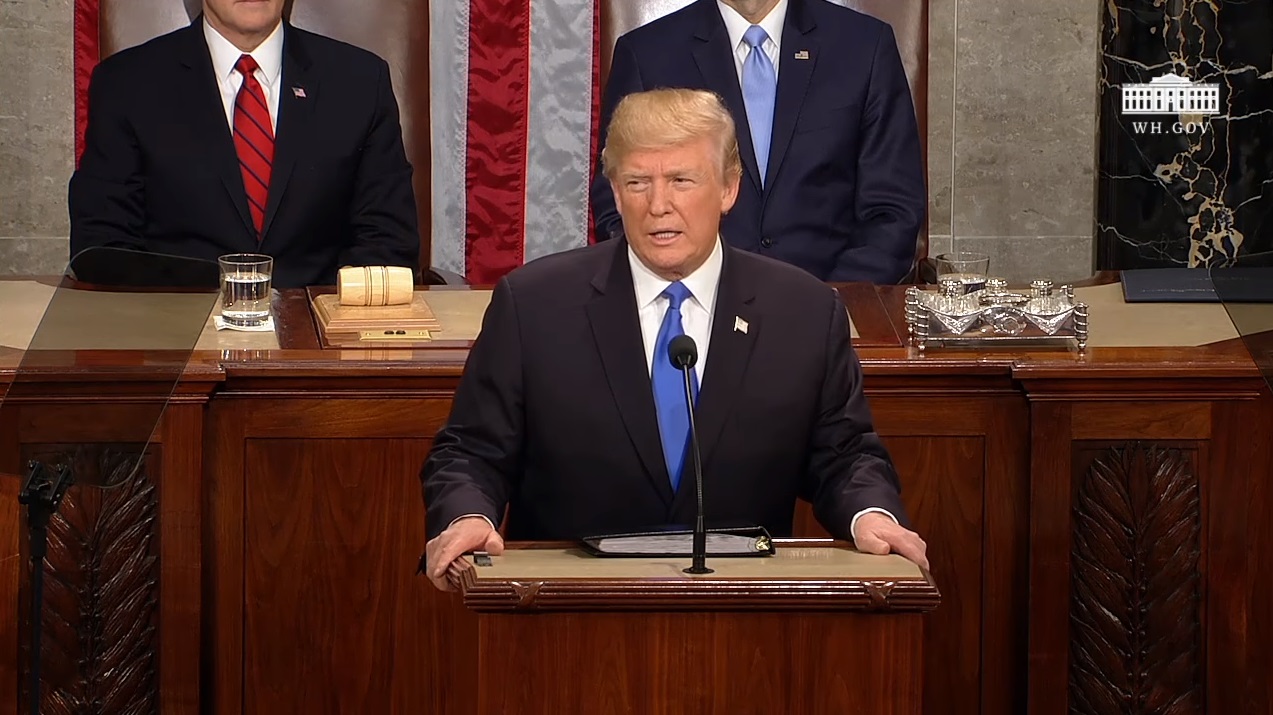Satire or Propaganda? The Free Speech Implications of the Violent Trump Video
“This was one of those instances where you can’t help but be angry,” says Tim Alberta, POLITICO Magazine’s chief political correspondent.

A fake and incredibly violent video emerged over the weekend.
In it, Donald Trump is seen attacking his enemies inside the ‘Church of Fake News’ including a variety of outlets like NPR, CNN and the Washington Post. As Lynyrd Skynyrd’s “Free Bird” plays in the background, Trump — in a church massacre scene from the 2014 movie “Kingsman” — shoots, stabs and lights fire to members of the news media along with late Senator John McCain, former Presidential candidate Hillary Clinton, Senator Bernie Sanders, the Black Lives Matter movement and Congresswoman Maxine Waters, among others.
While this could technically be defined as satire — something that is a cornerstone of democracy and freedom of speech — it feels downright disturbing to watch this video in a time when the president is openly aggressive in his verbal attacks against these people and organizations, and mass shootings are happening regularly.
It’s also worth noting that this video was shown at a Republican event at one of Trump’s resorts in Florida.
“This was one of those instances where you can’t help but be angry,” says Tim Alberta, POLITICO Magazine’s chief political correspondent, on Detroit Today with Stephen Henderson. POLITICO is one of the news organizations depicted in the video being killed.
“This is a really tense time in America, and when the President of the United States is regularly deploying violent rhetoric against the media, and he does not immediately come out on camera to denounce [the video], it’s just disturbing,” Alberta continues.
Experts who study satire and propaganda say that this video could fit into the definition of either of those kinds of speech. They say, although Trump might not be directly responsible for the video, he should still bear some of the moral burden it creates.
“Although the violence in the video was fiction, that kind of violence is not fictional,” points out University of Texas Rio Grande Valley associate professor of philosophy Cory Wimberly, the author of an upcoming book called “How Propaganda Became Public Relations.”
“A lot of it is coded. There are a lot of things we might see when we see the video, but there are also elements of it that are only meant to be understood by its intended audience that are lost on the rest of us,” he continues, referencing memes on alt-right and ‘incel’ internet forums.
Fred Vultee, a Wayne State University associate professor of journalism who studies satire, says the video might be repugnant, but it’s still likely constitutionally protected speech.
“It’s hard to me to look at this and think that it poses a direct threat to anyone,” says Vultee. “I don’t think, partly because it’s been up for 15 months now, that an immediate effect of this is likely. But there might be a more indirect and a more tangential effect.”
